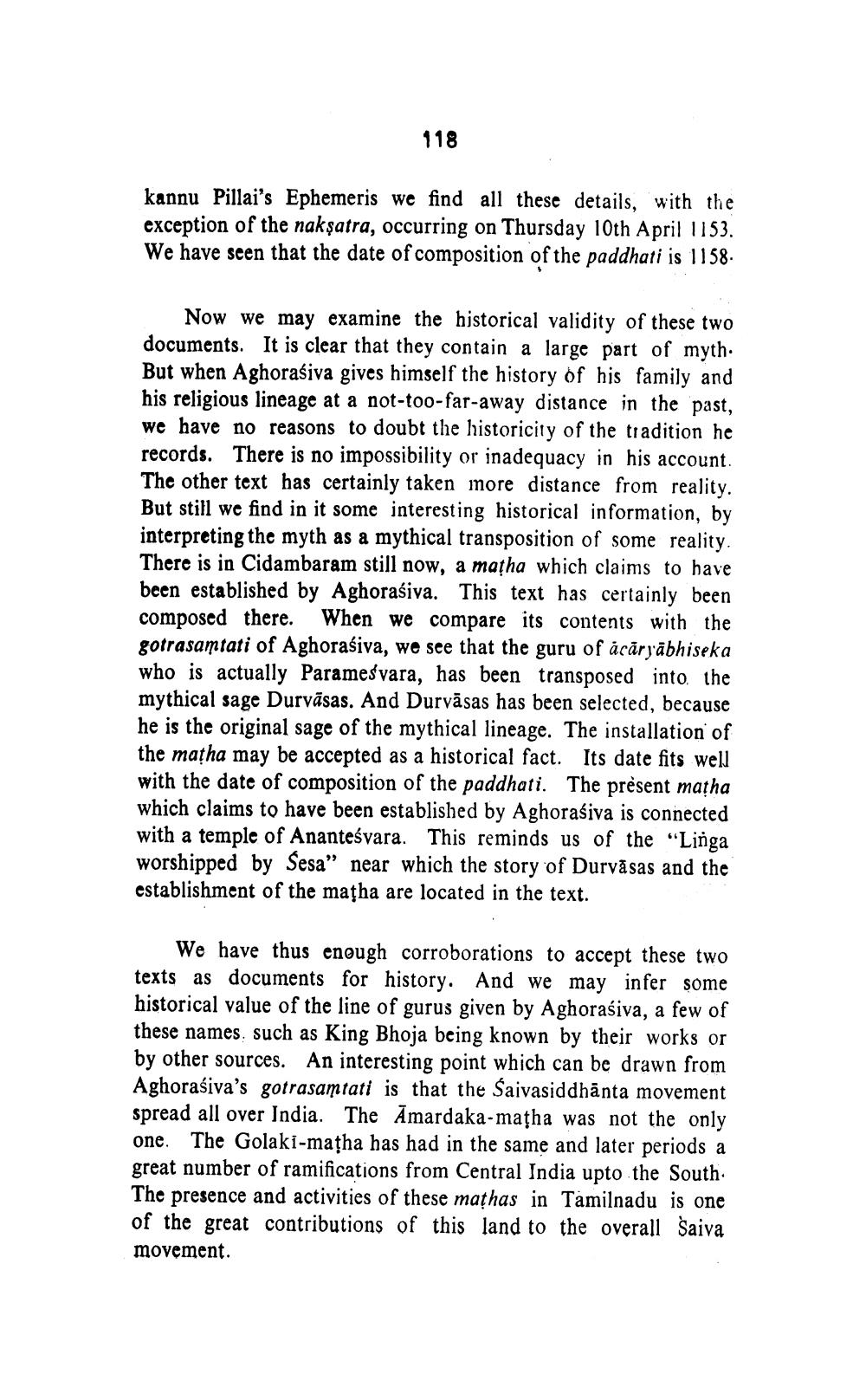Book Title: Raja Raja The Great Author(s): Anantacharya Indological Research Institute Publisher: Anantacharya Indological Research Institute View full book textPage 8
________________ 118 kannu Pillai's Ephemeris we find all these details, with the exception of the nakşatra, occurring on Thursday 10th April 153. We have seen that the date of composition of the paddhati is 1158. Now we may examine the historical validity of these two documents. It is clear that they contain a large part of myth. But when Aghoraśiva gives himself the history of his family and his religious lineage at a not-too-far-away distance in the past, we have no reasons to doubt the historicity of the tradition he records. There is no impossibility or inadequacy in his account. The other text has certainly taken more distance from reality. But still we find in it some interesting historical information, by interpreting the myth as a mythical transposition of some reality. There is in Cidambaram still now, a matha which claims to have been established by Aghoraśiva. This text has certainly been composed there. When we compare its contents with the gotrasamtati of Aghoraśiva, we see that the guru of acāryābhiseka who is actually Paramešvara, has been transposed into the mythical sage Durvāsas. And Durvāsas has been selected, because he is the original sage of the mythical lineage. The installation of the matha may be accepted as a historical fact. Its date fits well with the date of composition of the paddhati. The present matha which claims to have been established by Aghoraśiva is connected with a temple of Ananteśvara. This reminds us of the "Linga worshipped by Sesa" near which the story of Durvāsas and the establishment of the matha are located in the text. We have thus enough corroborations to accept these two texts as documents for history. And we may infer some historical value of the line of gurus given by Aghoraśiva, a few of these names, such as King Bhoja being known by their works or by other sources. An interesting point which can be drawn from Aghoraśiva's gotrasamtati is that the Saivasiddhānta movement spread all over India. The Amardaka-matha was not the only one. The Golaki-matha has had in the same and later periods a great number of ramifications from Central India upto the South The presence and activities of these mathas in Tamilnadu is one of the great contributions of this land to the overall Saiva movement.Page Navigation
1 ... 6 7 8 9 10 11 12 13 14
